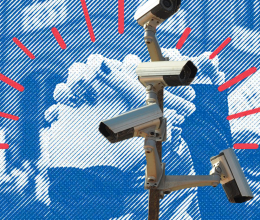
Milwaukee Police Department uses technologies to monitor and map social media accounts.
Social media includes some of the most intimate details of our lives, including our health information, likes and dislikes, political views and religious beliefs, sexual orientation, and people with whom we associate. Its content includes usernames, bios, contact information, status updates, comments, photos, videos and streams, event postings, friend or follower lists, friend requests, groups, private messages, account creation dates, location, and more.
Federal, state, and local law enforcement agencies all monitor social media accounts. While this has typically been done to surveil political activists, at times this has been much broader. For example, LAPD officers were ordered to note the social media information (including Facebook, Instagram, Twitter, and other social media accounts) of every civilian they questioned, according to an internal July 2020 memo obtained by the Brennan Center. This included those who were not arrested or even accused of a crime, let alone found guilty of committing one.
Police may combine social media monitoring with other technologies, such as face recognition, to identify individuals.
Since social media posts are highly contextual, police may misinterpret innocuous language, song lyrics, or inside jokes, leading to criminal consequences for individuals who may not have even been aware they were under surveillance.
Read more:
- Milwaukee police seek ‘open source intelligence tool’ for RNC
- Milwaukee police, MPS partner with app to share school safety information
This technology is only one reason why we need a Community Control Over Police Surveillance (CCOPS) ordinance. CCOPS would require oversight and community input in invasive surveillance technologies, allowing the Wisconsinites being surveilled to make informed decisions about their privacy.
Milwaukee deserves to know how the police is surveilling us. Milwaukee needs CCOPS.
